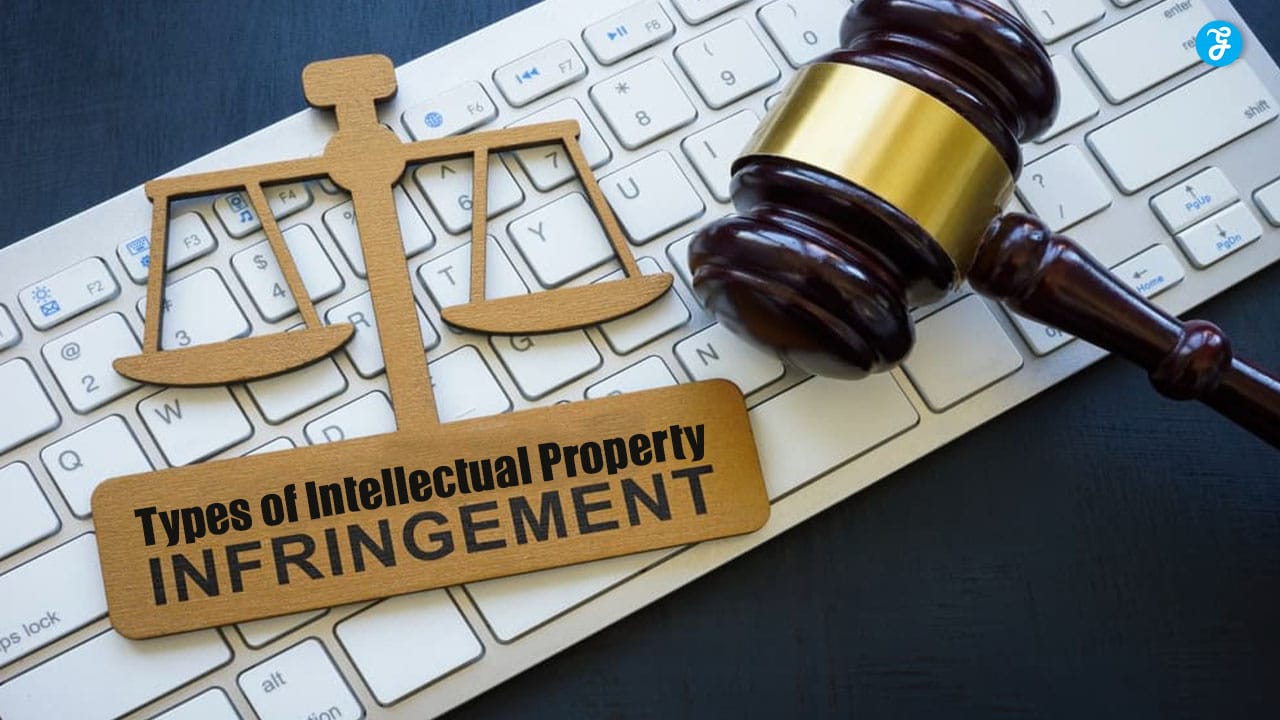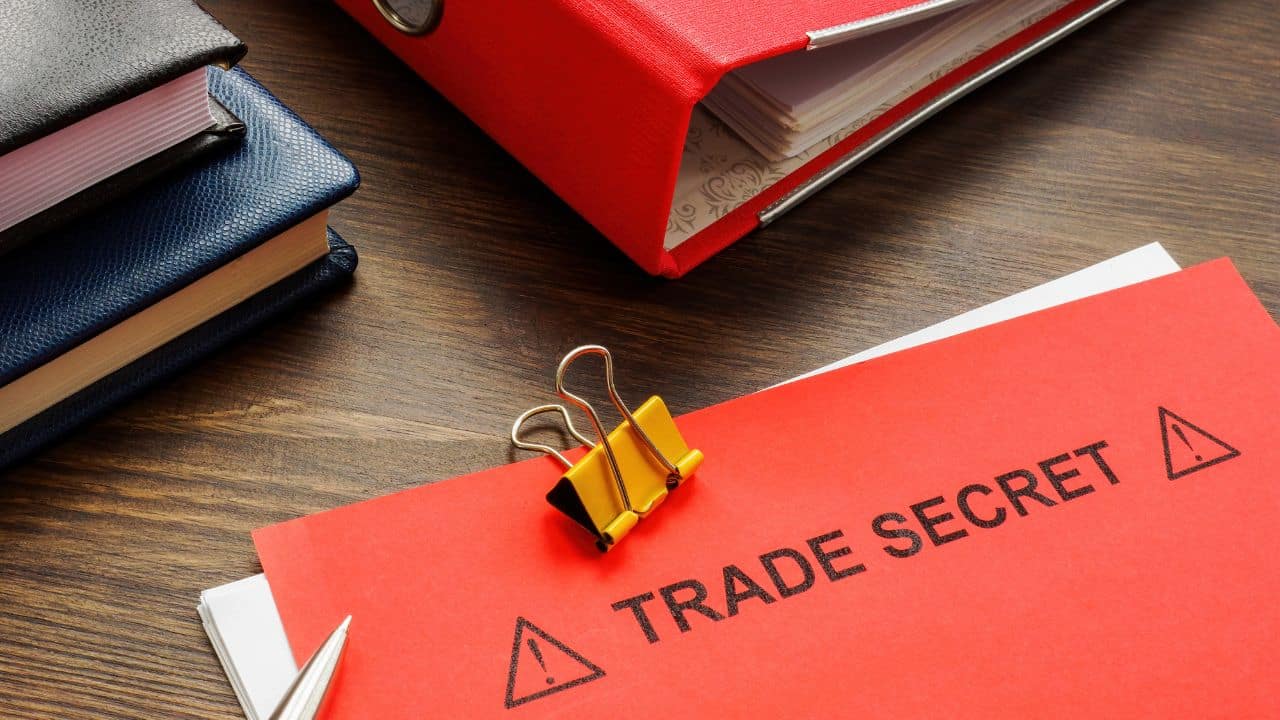Intellectual property (IP) is a critical asset for businesses, creators, and innovators. It includes creations of the mind, such as inventions, literary and artistic works, designs, symbols, names, and images used in commerce.
Protecting intellectual property is essential, as it enables creators and businesses to maintain exclusive rights over their creations, driving economic value, fostering innovation, and encouraging creativity.
However, intellectual property infringement, where others use or exploit these assets without permission, is a prevalent issue that can lead to financial loss and reputational damage.
Understanding the different types of intellectual property infringement is crucial for businesses, artists, and entrepreneurs alike.
In this article, we’ll discuss the six main types of intellectual property infringement and offer insights into how they occur, their potential impacts, and ways to protect against them.
Why Intellectual Property Infringement Matters?
Intellectual property infringement can have far-reaching consequences for businesses and individuals. Beyond financial loss, it can damage brand reputation, reduce competitive advantage, and lead to costly legal battles.
Moreover, the unauthorized use of intellectual property diminishes the value of creativity and innovation, affecting those who rely on these assets for their livelihood.
6 Types of Intellectual Property Infringement
Let’s take a look!
1. Copyright Infringement
Copyright infringement is one of the most common types of intellectual property infringement and occurs when someone reproduces, distributes, displays, or performs a copyrighted work without the copyright holder’s permission.
- What Copyright Covers: Copyright protects original works of authorship, including literary works, music, films, artwork, software code, and architectural designs. Copyright is automatically granted upon creation and lasts for a set period (usually the creator’s lifetime plus several decades).
- How Copyright Infringement Occurs: Common examples include unauthorized sharing of music, movies, or books; copying website content without permission; or using copyrighted images in marketing materials without obtaining a license.
- Consequences of Copyright Infringement: Copyright holders can sue for damages, which may include actual damages and lost profits, statutory damages, and attorney fees. Courts may issue injunctions to prevent further use of the copyrighted work.
- How to Prevent Copyright Infringement: Businesses and individuals can avoid copyright infringement by using only licensed materials, purchasing royalty-free content, and citing sources properly. If unsure, seek permission from the copyright owner.
Copyright infringement is particularly prevalent in the digital age, with unauthorized sharing and downloading of content becoming easier and more accessible.
2. Trademark Infringement
Trademark infringement occurs when a party uses a registered trademark, or a confusingly similar mark, without the owner’s consent, causing potential confusion among consumers regarding the source of goods or services.
- What Trademarks Cover: Trademarks protect distinctive symbols, logos, names, slogans, and other identifiers that distinguish a business’s products or services from competitors. Trademarks are obtained through registration and can last indefinitely as long as they’re in use.
- How Trademark Infringement Occurs: Common examples include using a similar brand name or logo that causes consumer confusion, creating counterfeit products with another brand’s logo, or domain squatting by using a trademarked name in a website domain without authorization.
- Consequences of Trademark Infringement: Trademark owners can seek legal action to stop the infringing use, request monetary damages, and even demand the destruction of counterfeit goods. In cases of willful infringement, damages may be increased significantly.
- How to Prevent Trademark Infringement: Businesses can conduct thorough trademark searches before launching new brands or products to ensure they are not using existing trademarks. Registering trademarks in relevant markets also offers greater legal protection.
Trademark infringement is damaging to brand reputation, as it can mislead consumers and undermine brand integrity, making it essential for businesses to protect their trademarks.
3. Patent Infringement
Patent infringement occurs when someone makes, uses, sells, or imports a patented invention without the patent holder’s permission. Patents provide inventors with exclusive rights to their inventions for a specific period.
- What Patents Cover: Patents protect inventions, which can include products, processes, designs, or methods that offer a new and useful solution or enhancement. There are different types of patents, including utility patents, design patents, and plant patents.
- How Patent Infringement Occurs: Patent infringement can happen when a company manufactures a product that is identical or similar to a patented invention, sells a patented product without permission, or uses a patented process in production without authorization.
- Consequences of Patent Infringement: Patent owners can file lawsuits for damages, which may include lost profits, reasonable royalties, and even injunctions to prevent further use. In cases of willful infringement, damages may be tripled (known as treble damages).
- How to Prevent Patent Infringement: Before creating or launching a new product, conduct a patent search to ensure no existing patents cover similar inventions. Businesses can also consult patent attorneys to assess potential patent conflicts.
Patent infringement stifles innovation and reduces the incentive for inventors to create and invest in new ideas, which is why patent protection is essential in industries like technology, pharmaceuticals, and manufacturing.
4. Trade Secret Misappropriation
Trade secret misappropriation involves the unauthorized use, disclosure, or acquisition of confidential business information, often used by companies to gain a competitive advantage.
- What Trade Secrets Cover: A company’s trade secrets include confidential information like formulas, practices, processes, designs, customer lists, and manufacturing techniques that have economic value.
- How Trade Secret Misappropriation Occurs: Common examples include employees stealing proprietary information, corporate espionage where competitors illegally obtain trade secrets, or third parties disclosing confidential information without permission.
- Consequences of Trade Secret Misappropriation: Companies can pursue legal action to seek damages, including lost profits and attorney fees, and they may obtain injunctions to prevent further use of the trade secret.
- How to Prevent Trade Secret Misappropriation: Businesses should implement robust security measures, require non-disclosure agreements (NDAs), and restrict access to confidential information only to those who need it.
Trade secrets are invaluable to many businesses, and their misappropriation can result in significant financial and competitive losses.
5. Industrial Design Infringement
When someone uses or sells a design that is subject to design rights without the owner’s consent, industrial design infringement has occurred. Industrial designs protect the visual elements of a product, like shape, color, and pattern, rather than the functionality.
- What Industrial Designs Cover: Industrial design rights protect the unique appearance of a product that makes it visually distinctive, such as furniture design, product packaging, and fashion items.
- How Industrial Design Infringement Occurs: Infringement can happen when a competitor copies the design of a protected product, uses similar aesthetics that confuse consumers, or replicates the look of a popular design without authorization.
- Consequences of Industrial Design Infringement: Design rights holders can file lawsuits for damages and seek injunctions to prevent further production or sale of infringing products.
- How to Prevent Industrial Design Infringement: Businesses can register their designs with the appropriate intellectual property office, ensuring they have legal protection in relevant markets.
Design infringement can harm the reputation and sales of original creators, especially in industries like fashion, furniture, and consumer goods, where appearance significantly influences consumer choice.
6. Cybersquatting and Domain Infringement
Cybersquatting and domain infringement occur when someone registers, sells, or uses a domain name that is identical or confusingly similar to a trademarked name with malicious intent, often to profit from the trademark’s established reputation.
- What Cybersquatting Involves: Cybersquatting includes registering domain names that match established brand names, intending to sell them back to the brand owner at an inflated price, or misleading consumers for financial gain.
- How Domain Infringement Occurs: Domain infringement can involve setting up fake websites with similar names to legitimate businesses to divert traffic or conduct fraudulent activities like phishing.
- Consequences of Cybersquatting and Domain Infringement: Trademark owners can file complaints under the Uniform Domain-Name Dispute-Resolution Policy (UDRP) to have infringing domains transferred to them. They can also seek damages for lost revenue and damage to brand reputation.
- How to Prevent Cybersquatting: Trademark owners can register multiple domain variations and proactively monitor for infringing domains. Legal actions, such as cease and desist letters, can also help prevent ongoing misuse.
Cybersquatting and domain infringement are increasingly common issues in the digital landscape, as businesses heavily rely on online presence for branding and customer engagement.
Conclusion
Intellectual property infringement poses significant risks for businesses and creators, leading to financial losses, reputational damage, and diminished trust.
The six types of intellectual property infringement—copyright, trademark, patent, trade secret misappropriation, industrial design, and cybersquatting—each target different forms of IP but can be equally damaging if not addressed.
Understanding these types of IP infringement is crucial for anyone who creates, manages, or markets intellectual property. By registering IP assets, implementing protective measures, and educating employees about IP policies, businesses can safeguard their valuable assets and prevent costly legal disputes.
Protecting intellectual property is not only a legal obligation but also a vital strategy for fostering innovation, competitive advantage, and sustainable business growth.










































